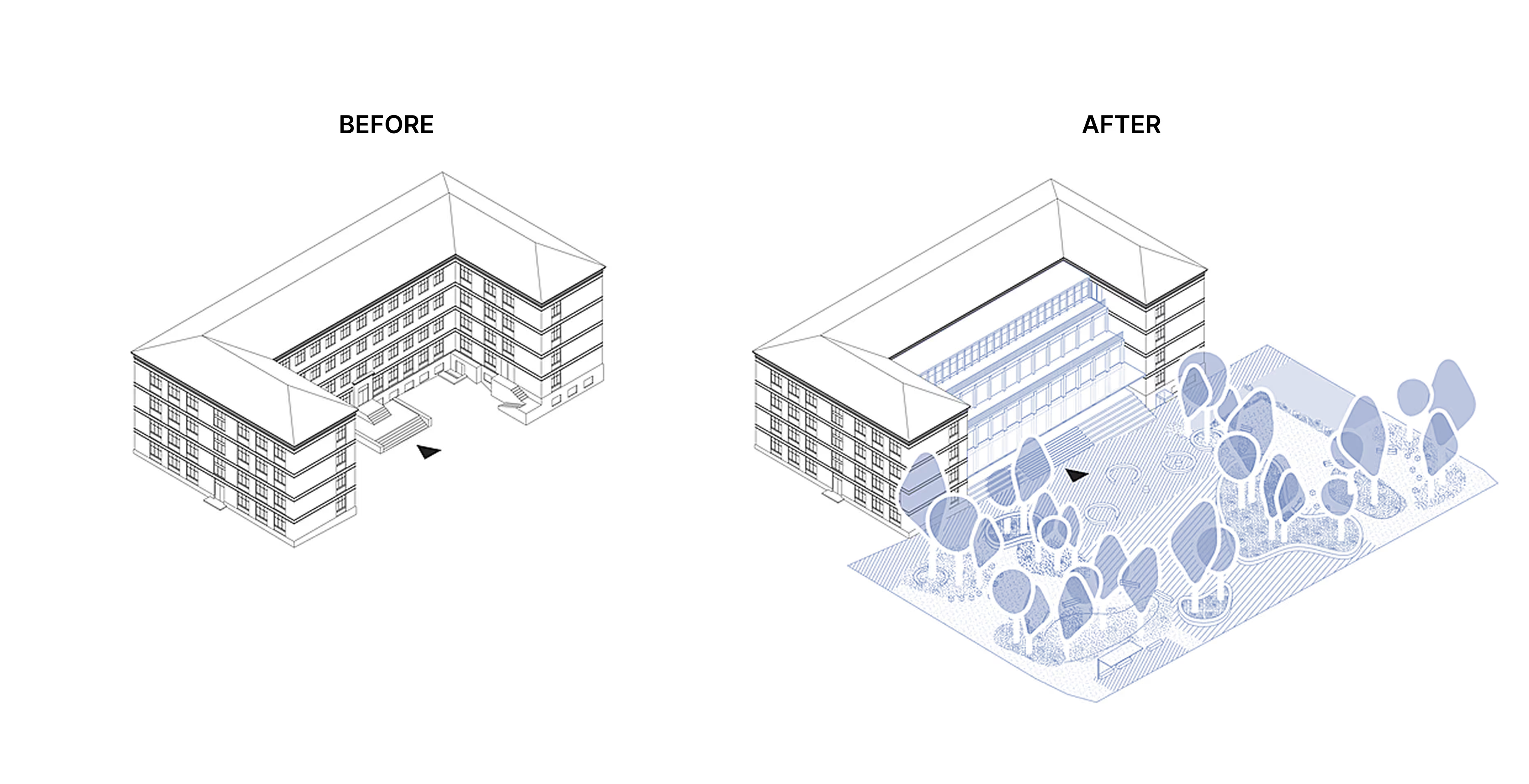
On the initiative of Mykhailo Fedorov, Vice Prime Minister for Innovation, Education, Science and Technology Development and Minister of Digital Transformation, the team of the Ministry of Education and Science has launched fundamental transformations in the education sector, from kindergartens to higher education institutions.
To launch systemic changes in the secondary school infrastructure, the Big City Lab team partnered with the Rebuild the Wonderful NGO, which includes Do Architects (Lithuania), Kavakava (Estonia), and Archikon (Hungary), architectural bureaus that have developed architectural solutions for transforming typical schools in their countries.
Ukrainian architects from Oksa, Pecker and Partners, and Kumeiko Architects architectural bureaus created the designs to meet Ukrainian state building codes.The project was funded by the Mariupol Reborn NGO, DTEK and Metinvest.
While working on the Mariupol 2040 vision, we discovered that 72% of all schools in the city are 5 architectural building types. A similar situation can be observed in other cities. If we look at the schools destroyed by the war, we see that one-third of them are the same five building types across Ukraine. Thus, five projects are enough for the government to rebuild or reconstruct thousands of schools to a high standard.
That is why we have developed 5 transformation concepts that answer what build back better means.
The central garden of the C-type building is full of greenery and has a pleasant atmosphere. The main entrance is narrow, and the ground floor level is raised. Due to the slope of the site and the lack of ramps, accessibility is a problem. The original circulation system in the building is rational, but it lacks places where students can meet and socialise. Among the advantages of the old building, it is important to note the size of the windows, the brick facades and the logical layout.
The school is located in the Zaporizhzhia region. It has convenient and accessible transport links to other parts of the city (a public transport stop nearby). There is no car park near the school, but there is a roundabout in front of the main entrance, which makes it easier to drop off students from cars.
By now, complete design and estimate documentation have been developed.

The proposed transformation includes a transparent addition with a large staircase system outside. The staircase is part of the public square in front of the school. The changes focus on enhancing the existing values of the garden by creating a meeting space. The entrance remains in its current location. The path to the classrooms is divided into three zones, from public to private. The first is an external public square with a street staircase/platform that leads to the semi-public space of the aula, a meeting room. The third section, which begins just a few steps above the central space, contains classrooms that are the school's private property with controlled access. The new volume has a staggered facade, which expands the assembly areas and creates transparent rooms inside.
The entrance function is changing in favour of pedestrian access. The modern design transforms the square, now it is ideal for school events and mass events.
The school gets a new hall, which becomes the heart of the building. It is located in an additional part constructed of wood and glass, which unites the space of the upper levels, opens the internal balconies, provides access to the corridors and the central part of the school. The accessible organisation of the interior space promotes safety and inspires world exploration.


Street benches and group study areas complement the school space, and the green area becomes a place for meetings and recreation.
Parts of the corridor are connected by extensions that add contact and communication to the transit function. The corridors are transformed - students and teachers can now communicate, wait for classes and relax. The spaces have built-in seating, tables, stands, blackboards, etc.


The current layout of the schoolyard is maintained, but all sections are enhanced with modern design and new features.
Around the school, the beautiful grove is complemented by benches and outdoor classrooms.
Various meeting and recreational spaces have been created along the green space and between the trees.
The sports ground has been reconstructed, with new equipment and stands for school events.
The backyard area is more diverse and dominated by greenery. There are paved areas for various activities, such as playgrounds, a small sports field and an open-air gym.
The school garden is a great place to do physical work and learn the basics of agriculture.
{{slider-31="/sliders"}}